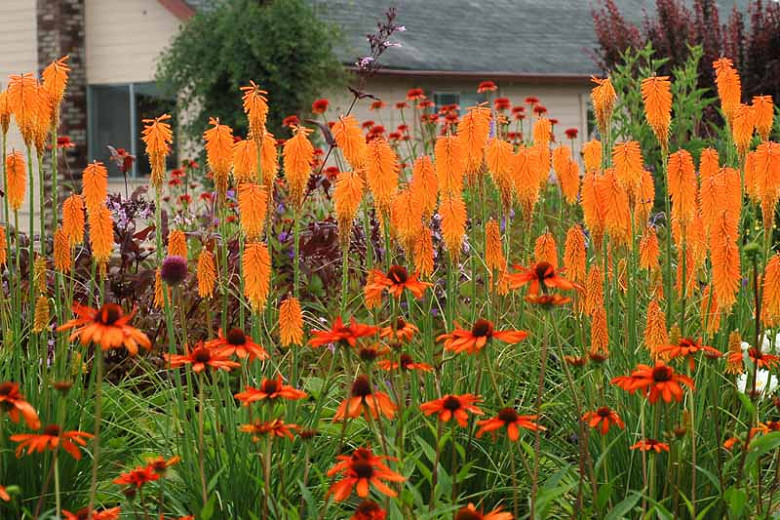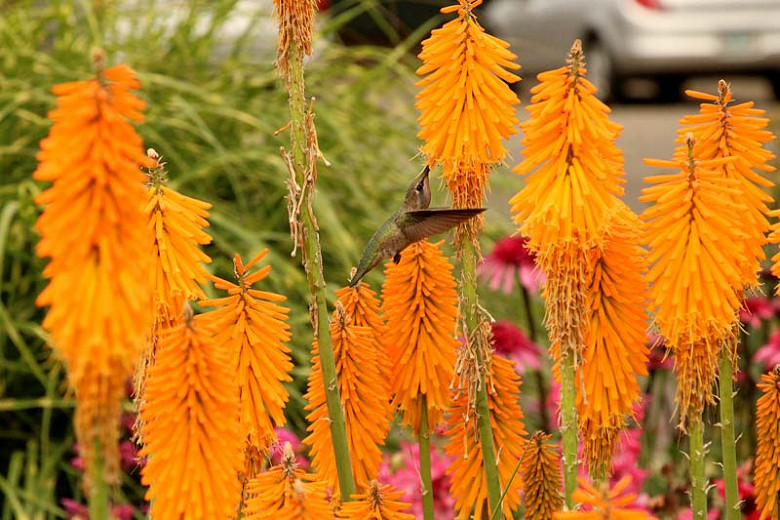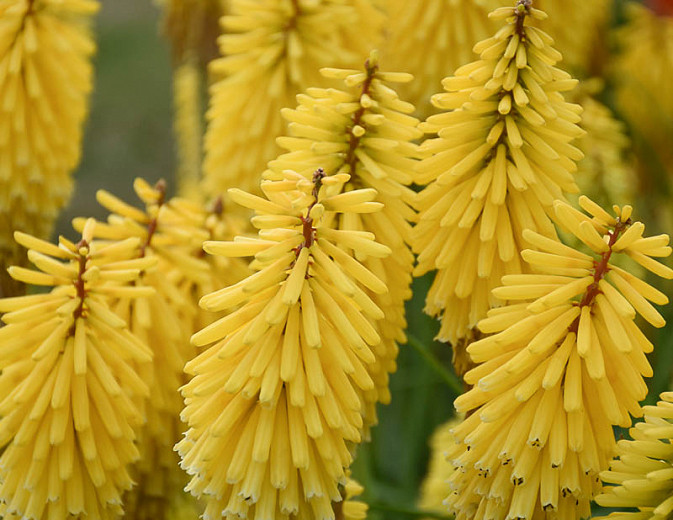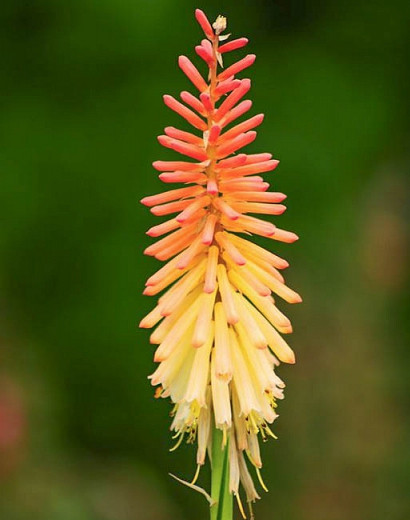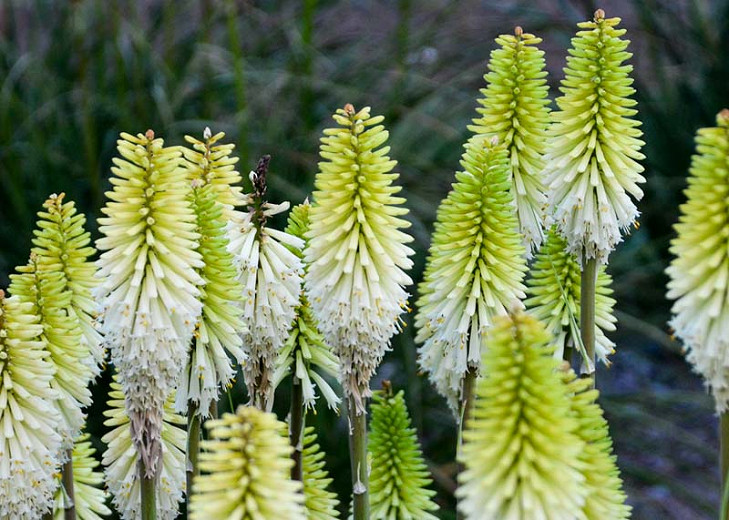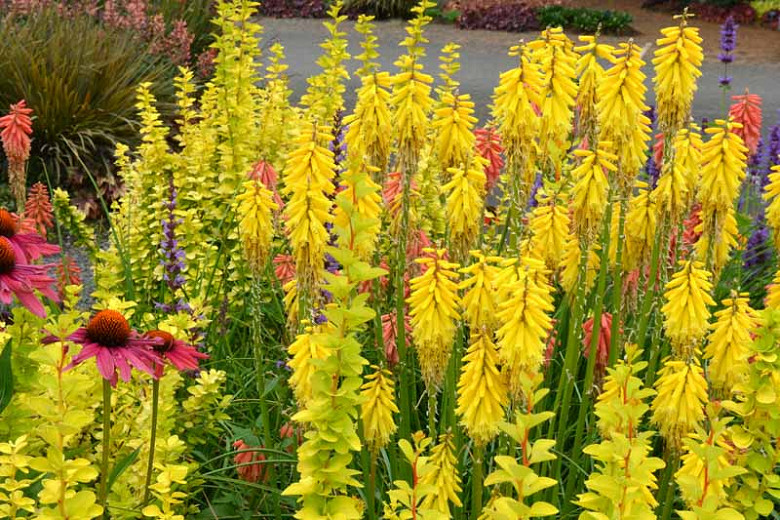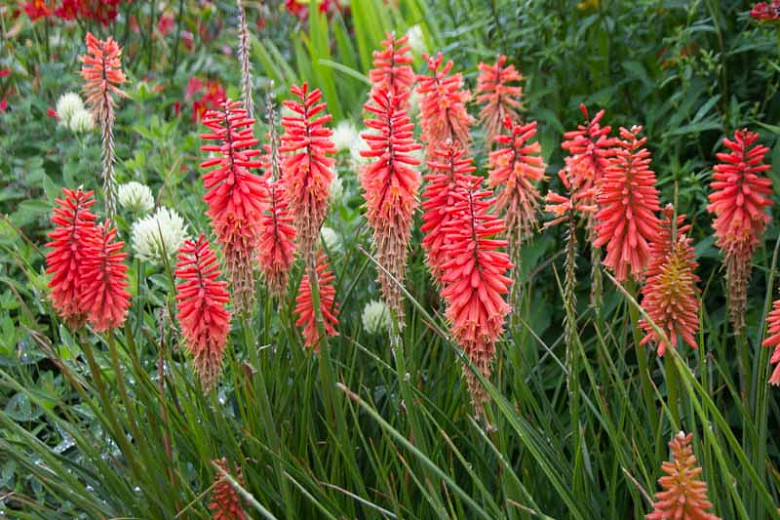Kniphofia Mango Popsicle (Red Hot Poker)
Kniphofia ‘Mango Popsicle’ produces impressive spikes of mango-orange flowers (up to 120 blossoms per spike) from early summer to early fall. Blooming in succession, the flower spikes are borne on stout flowering scapes which rise above a tufted clump of narrow grass-like leaves.
Kniphofia 'Mango Popsicle' produces impressive spikes of mango-orange flowers (up to 120 blossoms per spike) from early summer to early fall. Blooming in succession, the flower spikes are borne on stout flowering scapes which rise above a tufted clump of narrow grass-like leaves.
- Recipient of the prestigious Award of Garden Merit of the Royal Horticultural Society.
- Grows up to 30 in. high (75 cm) with a spread of 18 in. (45 cm). This Red Hot Poker enjoys a sturdy stem. However, some protection from strong winds would be recommended.
- This rhizomatous perennial performs best in full sun, in a sandy soil that has been enriched with humus. However, any deep, moist but well-drained soil will do. It can tolerate partial shade, but flowering will be reduced. Good drainage is essential to prevent crown rot.
- Drought, deer, and rabbit tolerant, Kniphofias attract butterflies and are a favorite of hummingbirds.
- Virtually disease free
- Kniphofias provide interesting vertical accents in the garden, among other summer-blooming perennials. They look at their best with Achillea (yarrows), Helenium Autumnale (sneezeweed), Hemerocallis (daylilies), and Rudbeckia (coneflowers).
- While primarily used in perennial borders, Red Hot Pokers are also well suited to naturalistic settings, water edges, or exotic style combinations. Plant them in front of an evergreen background, or as a stand-alone specimen – and be sure they will draw the attention of all onlookers. Never plant your Red Hot Pokers with their crown deeper than 3 in. (7 cm).
- Remove spent flower spikes to encourage more blooms and protect their crowns in winter in hardiness zone 6.
- The foliage tends to suffer in the winter months. You may want to tie foliage together in the fall to prevent water from entering the crown of the plant. Alternatively, you may cut the foliage off at the base in late fall.
- Should be planted in the spring or in the fall.
- Propagate by division of established clumps in late spring. Propagate by taking offshoots from the crown.
Requirements
| Hardiness | 6 – 9 |
|---|---|
| Heat Zones | 6 – 9 |
| Climate Zones | 4, 5, 6, 7, 8, 9, 14, 15, 16, 17, 18, 19, 20, 21, 22, 23, 24 |
| Plant Type | Perennials |
| Plant Family | Kniphofia – Red Hot Pokers |
| Exposure | Full Sun |
| Season of Interest | Summer (Early,Mid,Late)Fall |
| Height | 2' – 3' (60cm – 90cm) |
| Spread | 1' – 2' (30cm – 60cm) |
| Spacing | 18″ – 24″ (45cm – 60cm) |
| Water Needs | Average |
| Maintenance | Average |
| Soil Type | Loam, Sand |
| Soil pH | Acid, Neutral |
| Soil Drainage | Moist but Well-Drained |
| Characteristics | Plant of Merit, Showy |
| Tolerance | Deer, Drought, Rabbit, Dry Soil |
| Attracts | Birds, Butterflies, Hummingbirds |
| Garden Uses | Beds and Borders |
| Garden Styles | Coastal Garden, Gravel and Rock Garden, Informal and Cottage, Mediterranean Garden, Prairie and Meadow |
